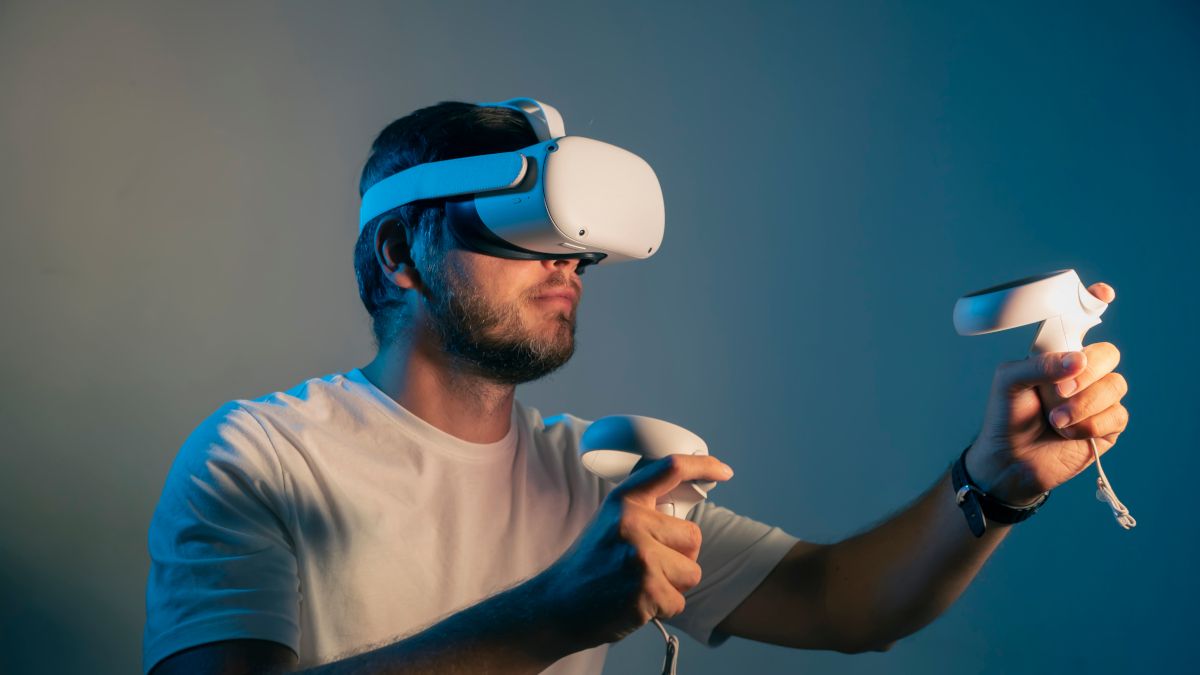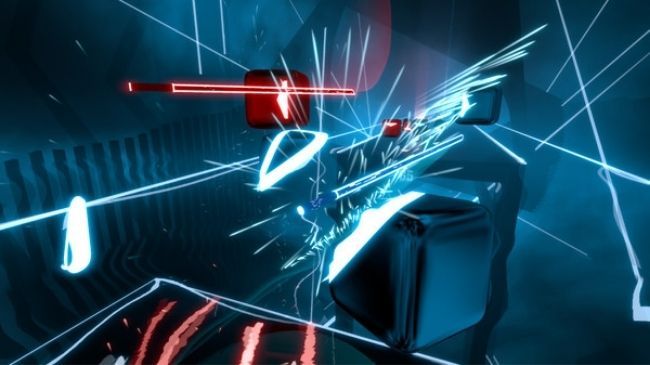Quick Links
Key Takeaways
VR does not require two eyes to work. However, some games may be too difficult with one eye, and for some users the experience may not be as immersive thanks to the narrow field of vision current headsets offer.
If you have one functional eye, virtual reality may not hold much appeal, like paying extra for a 3D movie ticket but being unable to see the 3D effect. However, there's more to VR than 3D images, and you may find it works better than exepected.
The Two Types of Depth Perception
We perceive depth in two main ways. First, there's stereoscopic vision using stereoscopic depth cues. This is what most people think of as "3D vision" and works by using the slight difference in viewpoint between both eyes to calculate depth. This is what VR and 3D movies use to give you the perception of depth using two 2D images.
However, this is only one way we perceive depth, and these depth "cues" only work when an object is close enough for your eyes to have "vergence." This is when your eyes move in opposite directions. Going cross-eyed when looking at something close to your face is an extreme example of vergence.
We perceive depth in other ways. We can see how objects show "parallax" as we move. When you look out of your car window while driving, objects on the roadside seem to whiz by, but distant objects such as buildings or mountains will appear to move slowly. That's parallax, letting you understand what's near or far away.
Knowledge of the size of things also informs our depth perception. Since you know that there are no dogs the size of skyscrapers, it must mean the dog is close to you, and the skyscraper is far away.
These are just some examples of "monocular" depth cues, but there are many ways our brains figure out depth without needing both eyes. Mostly, monocular cues still work in VR, as the software in question allows for them. In general, you should have the same depth experience in VR as in the real world using a single eye.
The App or Game Matters
Although on a technical level, VR should work for someone with one functional eye, that's different from having a good experience with VR apps or games. Since these apps and games are likely developed with the assumption that the user has two eyes, it may cause difficulties for monocular players.
If user interface (UI) elements in an app are locked to the user's head movement Iron Man-style, it would mean that someone with one eye can never see any of the information locked to the opposite eye's screen. This isn't a problem where the UI elements are not locked to head movement since you can simply turn your head to see the information.
Gameplay with on eye can be much harder than intended in action games, where you need to respond to things happening in the missing part of your visual field. Turning down the difficulty may not help as much as it needs to either since even at lower difficulty settings the assumption of a full visual field will still exist. A title likely to be difficult with one eye is Beat Saber where you need to slash 3D objects at high speed across the whole visual field.
To get a good experience in VR with one eye, it's important to carefully select the type of app, experience, or game you use. It's worth mentioning that the Meta Quest Store and Steam have refund policies that let you refund a title if you've used it for less than two hours. So there's no harm in trying something out for an hour and deciding if it will work for you.
Consider Getting in Touch With Developers
If there's a VR experience that you want to enjoy but can't because it's unusable with one eye, consider writing to the developer and explaining the specific difficulties you're having. Sometimes, it may be possible to make things more comfortable with a relatively simple change or addition, and many developers are open to improving accessibility in their software.
For example, the option to move all UI elements to one or the other side of the display could make all the difference while not requiring a significant amount of time and effort from the developer. Creating accessibility solutions is always a challenge for developers since there's infinite diversity in the challenges users may face, making it impossible to cover every eventuality. This is why feedback from users is important!
Is VR Worth It With One Eye?
While you can use VR with one eye, and it will work, is it worth it? As we mentioned earlier, a lot depends on the specific apps you choose, but there's more to the question.
For one thing, most VR headsets have relatively narrow fields of vision, usually somewhere between 90 and 110 degrees. That's far less than the average human field of vision, which generally sits around 220 degrees when looking straight ahead. A VR headset can feel like wearing horse blinkers or a diving mask, but anything over 90 degrees generally seems sufficient for immersion.
If you only have one eye, that total field of vision is cut in half so that it may feel particularly narrow and, to some users, may affect their ability to feel immersed. It also means you may have to turn your head an excessive amount to see all the necessary information, which can be a comfort issue.
The best advice we can offer to anyone with one functional eye considering VR is to try it before you buy. Whether the experience is worth the cost for you will be highly personal, so have a friend with a headset give you a demo, or consider ordering one with a plan to return your purchase if need be. You don't have to worry about VR not technically working, but you may find that it doesn't work for you in particular.


